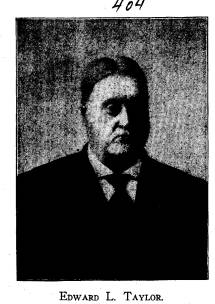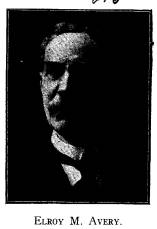Ohio History Journal
|
322 Ohio Arch. and Hist. Society Publications.
and the other the officers of the American fleet of Commodore Perry and the British fleet of Captain Barclay. The day's outing was delightfully closed by a steam-yacht trip from Port Clinton to Put-in-Bay, where a short stop was made and a glimpse taken of the proposed site of the monument to be erected in September, 1912, commemorative of Perry's encounter on Lake Erie.
EDWARD LIVINGSTON TAYLOR. An innumerable host of admiring acquaintances heard with regret; and a wide circle of intimate friends learned with sincere sorrow of the sudden death of Edward Livingston Taylor, who unexpectedly passed to the great beyond on the evening of Sunday, May 29th (1910.) His was no ordinary character; his abilities were of an unusual order; his qualities of sociability and friendship bound him in the closest |
|
|
|
the frame house then constructed for their home, still stands, one of the oldest landmarks of early settlement in the state, and it is still in the possession and occupancy of the Taylor family. This Truro township is historic, for it lies in the "Refugee Tract," a strip of land four and one-half miles wide from north to south and about fifty miles from east to west, extending from the east bank of the Scioto River to near the |

